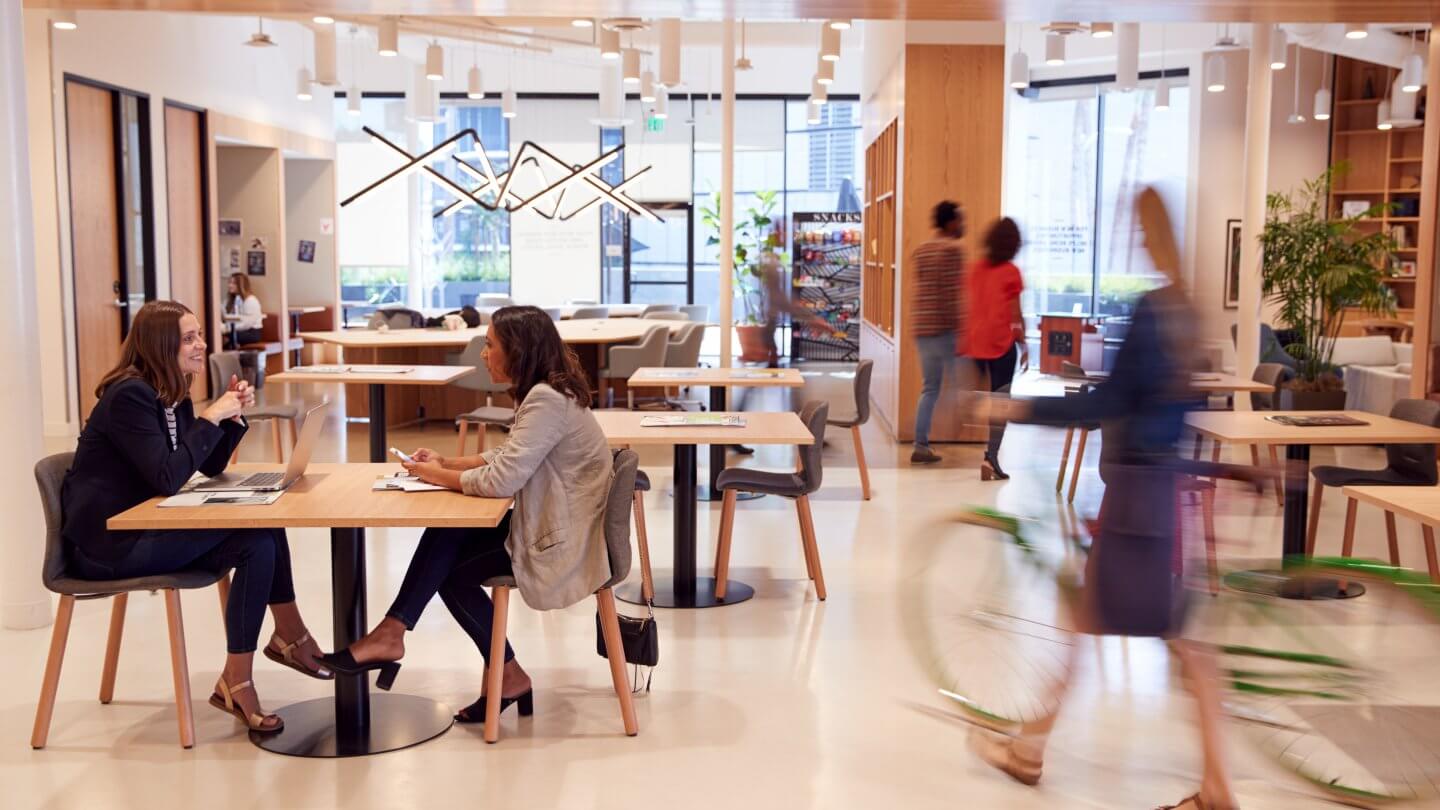Tech at the Heart of Next-Generation, Flexible Workspace
As companies worldwide reassess their use of workspaces, the challenge is for landlords to offer the kind of space that is now expected. Organizations are looking to optimize their use of real estate through flexible spaces in response to changing patterns of work. Clearly, the model of single, large CBD sites permanently staffed is increasingly irrelevant, so tenants and landlords are wondering: How might the flexible workspaces of the future work?
There is a disparity between what tenants expect of flexible real estate and what is on offer. The differences and shortfalls are brought into sharp relief by the ubiquity of powerful technology in every walk of life. Powerful smartphone apps can provide for almost every human need at the touch of a screen; tenants are expecting this same level of simplicity be applied to their use of a flex space whether their need is business as usual, a large team meeting or having access to regional offices closer to the homes of employees. Landlords that can align their practices with this level of provision and meet tenant expectations will be at an advantage, leaving those behind that still consider tech-enabled flex space the poorer cousin in their portfolios.
Research shows (Verdantix, May 2021) that tenants quickly pick up on whether the flexible space they occupy is presumed second-rank status regarding basics like wi-fi and digital security or lack of proper access to digital resources (signage, bookings, building access, for example).
For landlords with large office portfolios, meeting tenant expectations at scale may feel complex or considerably difficult. With scale come further challenges for landlords in terms of technology deployment and greater expectations on what their total portfolio might offer. Use of space in a different neighbourhood, or a different city, for example, may be an attractive USP for tenants. But creating a unified offering to tenants with the convenience and experience they have come to expect is highly challenging. Landlords need to decide on how they approach this and what their delivery model is.
Landlords should be working closely with tenants to better respond to changing demands and needs. For example, many flex space provisions allow no tenant-made alterations, yet, according to research (Verdantix, May 2021) a majority desires these — some even would prefer the ability to make their changes to premises permanent. Because tenants are expecting greater flexibility and better in-building experiences, the most relevant changes to many are focused on the digital capabilities of the offering (secure, frictionless access, amenities and services at the touch of a button, secure network etc.). Landlords need to make sure they have the technology in place to deliver these. It’s not just access to space and services though, as mentioned. It’s also the in-building experience that’s key to meeting tenant expectations – tenants want instant, secure services that they can book and pay for effortlessly.
Landlords should be working to ensure their entire portfolio, post-pandemic, is fit for purpose because the world of work itself is utterly different in 2021. Ensuring provision is tenant-focused means the difference between premises occupied or vacant. Many of the world’s largest landlords are adapting at different rates; those who deploy the software and technology across their portfolio that allows them to meet tenant expectations will steal a march on the competition.
Aligning with the new reality of the workplace and being elastic enough to adjust at the speed of modern digital business are two key attributes for landlords’ success. Technology is massively instrumental on both counts, so those landlords without internal resources and knowledge to apply to the issues need to look to suitably qualified third parties for aid. Regardless of in-house capability, all landlords know it’s a challenging task staying ahead of the game by continuously developing digital capabilities.
In a previous article on Tech HQ, we focused on a provider of dedicated building and tenant management solutions, essensys. You can refer back to this article for more details or reach out to the company in question in the first person to discuss options.









